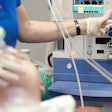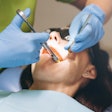
There are very few people who would consider having dental treatment without anesthesia. Preventive services and routine teeth cleanings aside, one of the top reasons why people avoid dental care is the fear of real or imagined pain.
Patients want to know that they won’t feel any pain when deciding on dental treatment. Dentistry offers several options for pain control. Anesthesia means a lack or loss of sensation with or without consciousness. This article (part one of a two-part series) will discuss local anesthetics and inhaled nitrous oxide (N2O) and the related billing and coding considerations.
The type of anesthetics used also depends on the person's age, health condition, length of the procedure, and any past adverse reactions to anesthetics.
Some local anesthetics available are articaine, bupivacaine, lidocaine, mepivacaine, prilocaine, and epinephrine-free local anesthetics for those sensitive to the drug. Types of sedation analgesics include diazepam (Valium), midazolam (Versed), propofol (Diprivan), and N2O. Before initiating any form of dental anesthesia, it is vital to establish stringent practice protocols that align with the guidelines set forth by the ADA.1
An accurate, detailed medical/dental health history is a must for each patient since it may provide valuable information for the dentist before beginning treatment (because certain medications can influence treatment decisions) or impact postoperative care instructions. Be aware that some patients may not divulge specific healthcare issues because they think it isn’t related to dental care, such as not wanting to disclose that they are taking drugs related to addiction recovery.
Do not put the practice at risk by failing to obtain a comprehensive health history on a new patient and updating the health histories of existing patients. Establish a routine with all staff to view each patient's health history daily and update them.
Creating an analgesic/anesthesia record for a patient can be easy if you understand the purpose of recording the delivery of the agent and the monitoring protocols. The record would include a complete medical history and should contain the following:
- Medical conditions past and active, such as cancer, heart disease, diabetes, recent surgeries, implants, mental health and anxiety issues, and other information listed on the patient’s questionnaire
- Current medications that the patient is taking because:
- Some drugs can interact with local anesthetics or other drugs the dentist may prescribe
- Some medicines may affect the success of dental treatment or the patient's other health condition(s) (e.g., blood thinners)
- Certain drugs may impact postoperative care instructions
Choosing anesthesia for the patient
Before choosing the type of anesthesia, a previsit screening is recommended to evaluate the patient, make a diagnosis, and receive a signed informed consent from either the patient or guardian. The current Code on Dental Procedures and Nomenclature (CDT) code for evaluating moderate or deep general anesthesia is D9219.
Local anesthetic
D9215 is the CDT code for using local anesthesia in conjunction with operative or surgical procedures.
Most standard dental care is delivered with a local anesthetic. Local anesthetics are usually considered part of the procedure delivery in most coding categories and are not billed as a separate procedure, no matter how many vials are used. However, a combination of analgesics may bring the patient to a safe depth of anesthesia for surgical and more complex restorative procedures, which must be detailed in the clinical notes.
Code D9210 -- Local anesthesia not in conjunction with operative or surgical procedures -- can be used to document the use of local anesthetics.
N20 gas
Many patients have anxiety and a fear of needles and often need a sedative before the injection procedure. These sedatives can make the patient dizzy and unable to drive safely after dental care. For this reason and others, many dentists use N2O, a gas that is delivered through a mask, to relieve anxiety and place the patient in a state of euphoria.2
D9230 -- Inhalation of nitrous oxide/analgesia, anxiolysis
N2O is sometimes called “minimal sedation” in the ADA’s current guidelines for adults, and it may even provide pulpal anesthesia for children instead of local anesthetics.3 However, local anesthetics are used for most operative needs.
As with any anesthetic, N2O poses risks. The risks associated with N2O-oxygen sedation are reportedly low when used correctly, including when it is administered by healthcare professionals in a controlled environment, such as a dental office.2
The ADA Council on Scientific Affairs and the ADA Council on Dental Practice have developed at least 12 delivery system audio and visual safety features to help avoid adverse events during N2O-oxygen administration. The ADA has strict safety precautions to help ensure patient safety during administration.4 Nevertheless, N2O should not be used if the following conditions are present with the patient:
- The patient is in the first trimester of pregnancy.
- The patient has respiratory illnesses.
- The patient has a vitamin B-12 deficiency.
N2O gas is easily administered through a breathing mask, allowing the soothing and pain-reducing properties to reach the brain and body quickly.
Billing N2O to dental plans
Dentists often ask me if N2O can be billed to dental insurance plans in time increments. In general, the answer is no, it can’t. Nitrous is a per visit/date-of-service code -- it is not meant to be billed in time increments. If it were, its nomenclature and descriptor in the ADA codes would say so, as it does for IV anesthesia codes.
IV moderate sedation under codes D9239 and D9243 is measured in 15-minute increments and can be billed as such. D9222 and D9223 are also in 15-minute increments and are used mainly by oral surgeons and doctors with hospital privileges or surgical centers. (The rules vary from state to state.) You must follow the ADA Council on Scientific Affairs and the ADA Council on Dental Practice protocols if you use it for prolonged appointments.3
Patients with diagnosed anxiety disorders
If the patient has been diagnosed with an anxiety disorder (noted on the health history and evidenced by a physician's diagnosis), there may be an exception in billing. Using code D9999 -- Unspecified adjunctive procedure, by report -- is the only code that might fit this time-increment situation. The reason for the use of N2O and the reason for the extra time must be documented by the clinician in the chart and relayed in the claim. Using a CDT code is not a guarantee of reimbursement by insurance plans.
Coding the scenario
- D9219 -- Evaluation for moderate sedation, profound sedation, or general anesthesia
- D9210 -- Local anesthesia not in conjunction with operative or surgical procedures
- D9230 -- Inhalation of nitrous oxide/anxiolysis, analgesia
- D9999 -- Unspecified adjunctive procedure, by report (detail medical reasons and physician reports for anxiety disorder) to justify an extra 15 minutes use of N2O.
- F41.9 anxiety disorder, unspecified (International Classification of Diseases [ICD]-10-CM diagnosis [include in the claim in diagnosis box])
Most medical plans reject "unspecified" on the diagnosis. Dental plans may not.
Unspecified means the patient expressed that they have an anxiety disorder but without proof. If the patient has been prescribed and is taking prescription medications to treat anxiety-type disorders, this is considered evidence enough to use a specified anxiety ICD-10 code. Per the ICD coding authorities, “Coding convention states that you don’t need a 'final' diagnosis but that the diagnosis is to the level of clinical certainty for the encounter. The diagnosis code(s) help to support the medical necessity for the encounter.”4
N2O, like a local anesthetic, is valuable to help the patient have pain-free or less pain and increased comfort during dental procedures. Charging for this service and then for extra time for delivery may lead to misuse of the analgesics as intended and may deter patients from getting the necessary treatment due to the cost.
Anesthesia is about patient safety and comfort, which can be achieved by establishing standards and protocols and adhering to them with each patient regardless of the treatment. Look for part two of this article to discuss billing and coding for moderate, deep, and general anesthesia.
References
- Nitrous oxide. American Dental Association. Updated August 10, 2023. https://www.ada.org/resources/research/science-and-research-institute/oral-health-topics/nitrous-oxide.
- Nitrous oxide. Wikipedia. Updated January 15, 2024. https://en.wikipedia.org/wiki/Nitrous_oxide
- Guidelines for the Use of Sedation and General Anesthesia by Dentists. American Dental Association. https://www.ada.org/-/media/project/ada-organization/ada/ada-org/files/publications/
- Diagnosis Coding and Sequencing FAQ. American College of Emergency Physicians. Updated May 2023. https://www.acep.org/administration/reimbursement/reimbursement-faqs/diagnosis-coding-and-sequencing-faq
Estela Vargas, CRDH, is the founder and CEO of Remote Sourcing, a dental insurance billing and revenue recovery service. She is a graduate of Miami Dade College's dental hygiene program. Vargas' extensive background in the clinical arena of dentistry is coupled with her experience as a practice administrator and business executive.
The comments and observations expressed herein do not necessarily reflect the opinions of DrBicuspid.com, nor should they be construed as an endorsement or admonishment of any particular idea, vendor, or organization.



















